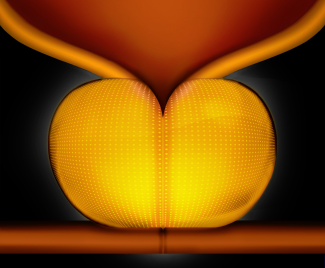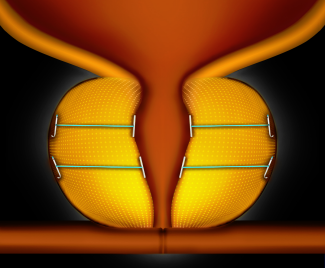Urolift
Introduction
The UroLift® system is a proven surgical option for treatment of lower urinary tract symptoms due to an enlarged prostate. UroLift® is a day case procedure with shorter or no catheterisation that gently opens the urethra without cutting or removing prostate tissue. Uniquely, UroLift® system treatment preserves sexual function with 0% incidence of anejaculation or retrograde ejaculation. The UroLift® system received Interventional Procedures Guidance from NICE in January 2014 and has now been selected for the Medical Technologies Evaluation Programme.
Mr Thilagarajah has trained under the guidance of Professor Peter Chin, based in Australia, one of the early surgical advisors in the development of the UroLift® System.
See what these leading GPs have to say about UroLift®:
Dr Sarah Jarvis, presenter on BBC One’s The One Show, partner in an inner London GP practice.
Dr Patricia Macnair, resident GP for Yours magazine, Trust Practitioner, Care of the Elderly, Royal County Hospital, Guildford.
Dr Roger Henderson, GP advisor to netdoctor.com, practising GP at Linden Hall Surgery, Shropshire.
How does the UroLift System work?
The urologist places small, permanent implants into the prostate to lift and hold the enlarged tissue out of the way, relieving pressure on the urethra and allowing urine to flow. There is no cutting, heating, or removal of prostate tissue required which means a minimally invasive, straightforward procedure and less downtime for patients.

Pre-procedure

Post-procedure

The small UroLift Implant is made from commonly used implantable materials. Typically, 4-5 implants are used per patient.
Comparison to other therapies
| Symptom Relief | UroLift® System* | TURP | Laser | Thermo -therapy | Medications |
|---|---|---|---|---|---|
| Minimally invasive treatment | ✓ | ✓ | ✓ | ||
| Rapid relief without complications1, 2 | ✓ | ||||
| Durable results after one treatment2, 4 | ✓ | ✓ | ✓ | ||
| Complications | |||||
| No cutting, heating, or removal of tissue | ✓ | ✓ | |||
| Does not cause erectile dysfunction or ejaculatory dysfunction 2, 3 | ✓ | ||||
| Does not cause permanent urinary incontinence2 | ✓ | ✓ | ✓ | ||
| Convenience | |||||
| Doctor can perform procedure in the office/clinic (not OR) | ✓ | ✓ | ✓ | ||
| Typically no catheter required after procedure | ✓ | ✓ | |||
| No medications required to sustain relief2 | ✓ | ✓ | ✓ | ✓ | |
* Most common adverse events reported include hematuria, dysuria, micturition urgency, pelvic pain, and urge incontinence. Most symptoms were mild to moderate in severity and resolved within two to four weeks after the procedure.
- Shore, Can J Urology 2014
- Roehrborn, J Urology 2013 LIFT Study
- McVary, J Sexual Medicine 2014
- Chin, Urology 2012
- AUA Guidelines 2003
- Berry, et al., J Urololgy 1984 and 2013 US Census worldwide population estimates
Mike's Story

Michael Frost, United Kingdom
UroLift System patient
Having been diagnosed with BPH several years ago, I have managed the condition with Tamsulosin. It has helped but over recent months the common symptoms of urgency and frequency started to recur. Then, in the process of pre-operative checks prior to an inguinal hernia procedure last November, I was found to have a small amount of blood in my urine. This led to further consultations with my GP and then to Consultant Nurse, Susan Nicol and eventually Consultant Urological Surgeon, Mr Thilagarajah, both of Essex Urology at Springfield Hospital.
Following a flexible cystoscopy, which was by no means painful or in any other way problematic, Mr Thilagarajah advised my suitability for either Green Light Laser surgery or for the newer UroLift System procedure. We discussed the options in some depth and I made other enquires before coming to the conclusion that the apparent advantages of UroLift are such that it is a far less invasive, potentially equally successful and offers a comparatively better recovery.
Just four days later, the procedure was carried out under general anaesthetic. When I came round I was catheterised, which was uncomfortable, but in less than an hour of consciousness and in the recovery area, that tube was removed. Back in on the ward, urine samples were required prior to discharge. Providing these was quite “uncomfortable”, with a bit of bleeding, but by no means “painful”. I was told to expect some discomfort along with “frequency” and “urgency” for a few days and perhaps a little more bleeding. I was advised not to drive for a week and not to lift, push or pull much weight for a couple of weeks, but that otherwise life could return to normal and I was discharged with antibiotics.
For the first 12 hours or so frequency and urgency was apparent, but there were two occasions only with a little blood; other than this, inconvenience and discomfort has been minimal with no incontinence or soiling at all. I have followed instructions to drink plenty of water and find my flow rate already to be greatly improved. What residual sensation there is, is by no means what some of my friends and colleagues have apparently experienced with other procedures and is diminishing daily. Now, 9 days after the operation, I am already glad that I opted for the UroLift system and I am grateful to Mr Thilagarajah and his team at Essex Urology for their care and consideration. At this time I am confident that my BPH symptoms will continue to decrease to a point approaching relative normality over a comparatively short period.
Based on my personal experience so shortly after the procedure, I have no hesitation whatsoever in recommending the UroLift System to deal with the symptoms of BPH in suitable patients; given that this is early days and that apparent success becomes long term efficacy.
Michael Frost
If you would like to discuss this further, Mike has offered to be contacted to talk about his own experience. Call us on 01245 234 158 and we will be happy to pass your contact details on to him for a confidential chat.
Paul's Story
I
Paul S., 66, United Kingdom
UroLift System patient
IBusiness owner Paul was forced to give up his hobbies and started to avoid leaving the house due to his enlarged prostate. Since his UroLift System treatment, he’s happier, calmer and says he feels 15 years younger.
“You don’t realize it at the time, but you are constantly embarrassed and harassed by the need to be near a toilet. I was always dying to go, and when I did go nothing much happened, and after a short space of time you’d need to go again. It dominates your life but you don’t realize it until afterwards.
I would describe my mood as agitated and stressed. I was forced to give up flying – my absolute passion in life – because it wasn’t safe. I had to get up two or three times a night – so it badly affected sleep – and this went on for more than three years.”
I“I have had a new lease of life since my UroLift®procedure”
Paul began to take a drug called tamsulosin and was on that for three years – he says it was helping only a little bit. Then Paul met his local Consultant Urologist who recommended the UroLift procedure.
“Very soon afterwards, I felt so much better. I feel like I have had a new lease of life. I am on a new exercise regime and I am back to where I was when I was 50. I feel more interested in life, and have taken up golf as well – and play three times a week. Life is different, and I would recommend this to absolutely anybody.
Publications
Prospective, Randomized, Multinational Study of Prostatic Urethral Lift Versus Transurethral Resection of the Prostate: 12-month Results from the BPH6 Study
Jens Sønksen et al. European Urology 2015
Three year results of the prostatic urethral L.I.F.T study
Claus G Roehrborn et al. Canadian Journal of Urology 22(3); June 2015
NICE MTEP Guidance MTG26
UroLift for treating lower urinary tract symptoms of benign prostatic hyperplasia
